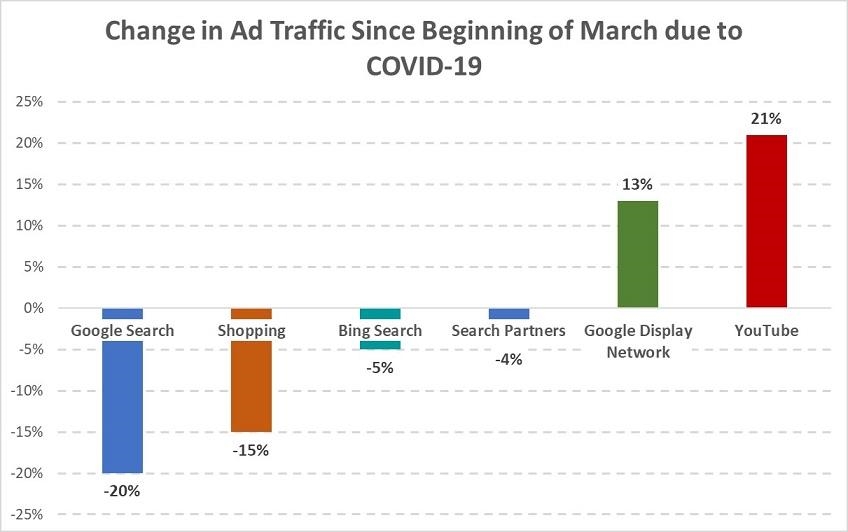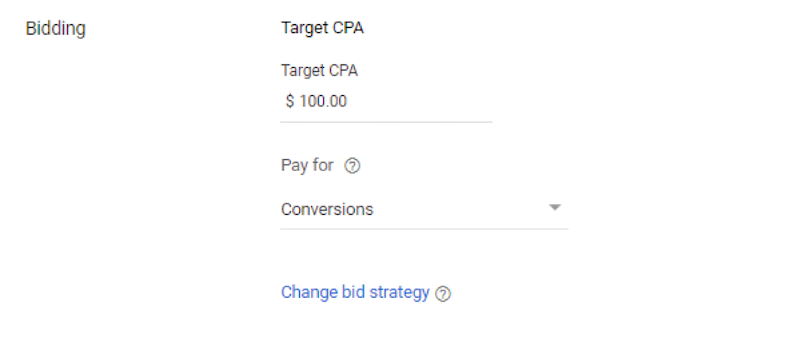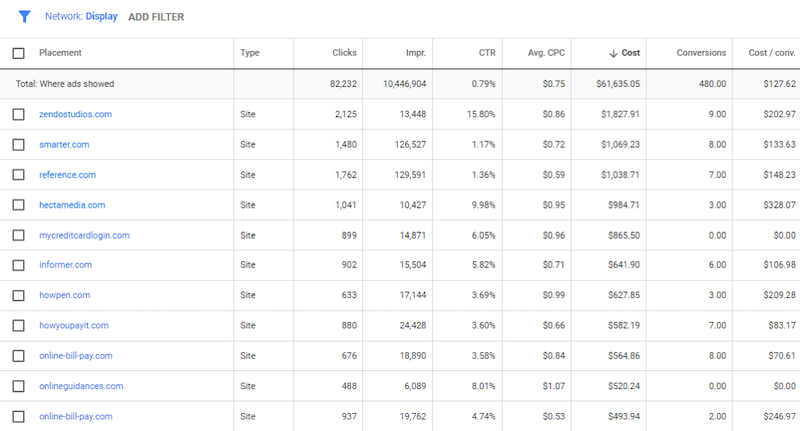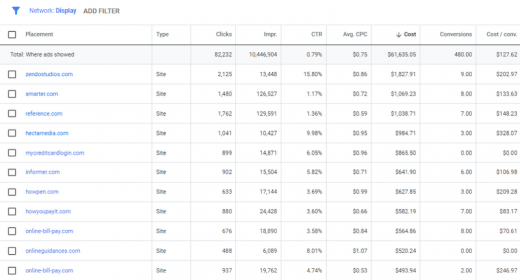4 Tips for Better Display Advertising During COVID-19
Like most online advertising channels, I have seen my clients shift how they’re using the Google Display Network to help them implement their evolving marketing strategies during the pandemic. I know each account is different, and our approach to optimization should be customized for every single account. But I wanted to take the time to share some of the tactics I have used the most since COVID-19 started impacting my clients’ accounts.

From our post on online advertising trends during COVID-19.
The best part about this post is that many of these display tactics can be used and tested for almost any account, whether you have been affected by COVID-19 or not. Let’s hop in.
1. Test pay-per-conversion bid strategies
Pay-per-conversion is only available if you are using a target CPA strategy, but it is pretty much exactly what it sounds like. You only pay if someone converts on your website, and if you have not tried this option yet, I highly recommended testing it out. If your Google Ads account has at least one-hundred conversions in the past thirty days, you can change your target CPA strategy to focus on conversions.

I have had several clients that had to lower their ad spend right when COVID-19 hit. To avoid going completely dark, we shifted the display campaign bid strategies to pay-per-conversion to allow us to keep building awareness, but not spend a lot.
In the image above, this client has a target CPA of $ 100. Since we launched this small campaign in March, we have received over four million impressions, over eighteen thousand clicks, but just one conversion. So we only paid $ 100 for all that brand awareness and traffic with a quality conversion as icing on the cake. But it gets even better.

Pay-per-conversion bidding only applies to direct conversions. If your display campaigns using this bid strategy rack up view-through or cross-device conversions, but you do not see any direct conversions, you will not have to pay a cent. This can help you stretch your ad budgets further and help your other sources increase their conversion, so it would be good to test even if your account has not been negatively impacted by the pandemic.
2. Monitor your placement reports more frequently
This section is going to be the shortest of this blog post, but it is still important: User behavior during the coronavirus pandemic has changed. With that being said, we have to review if the audiences we are targeting with our display campaigns have changed. Hopefully, you are already checking your placement reports in Google Ads frequently. But if you feel your target audience is seeing a shift in performance, you should be checking where your ads are being shown much more frequently than you were before COVID-19 hit.

Some people may have more time on their hands right now—we know that, overall, people are spending more time online. This additional amount of traffic could either benefit your campaign performance, or possibly hurt you. I have seen both ends of the spectrum in my client accounts. Monitor your placements to see what optimizations you should make and, remember, not all changes needed to be made will be negative. Yes, you will most likely see more placements to add to your exclusion lists. But you might take your new findings to either block out more, or target more, placements based on the recent data. You simply won’t know the actual trends if you are not checking your placement reports much more frequently than you were before the pandemic hit.
3. Get proactive with your exclusion strategy
This next recommendation comes with some additional help from my friend Kirk Williams and the Zato Marketing team. They recently wrote a blog post that included a coronavirus placement exclusion list. Please go and check it out for a full explanation. The thought here is there are many news sites that are part of the Google Display Network. And some of these news sites have large ad spaces. Check this one out from The New York Times.
Demographic targeting updates would fix this, but still.
Our data suggests that CTRs for clothing and apparel are back to pre-COVID-19 levels, but even if I was in the market for this product, I’m not going to be in the mood for it while I’m trying to read about economic recovery. While the exposure on these sites could still be valuable, you may have an account where you do not want to waste ad spend on potential users who just want to read about the latest pandemic updates. As always, you will have to decide depending on your account goals.
If you do decide to use the Zato exclusion list, you will be able to block out a variety of URLs, such as news organization URLs or common URLs with pandemic-related terms.
On the flip side, this exclusion list can also work great as a managed placement list for targeting users. If you have a product or service that can be really helpful during COVID-19, use this list to try and target users while they are actively reading or thinking about the pandemic. The intent to buy might be higher with this strategy. And while we are on the topic of implementing more managed placements…
4. Work on your managed placement campaigns
If you have seen audience behavior change in any of your campaigns (this could be for both display and YouTube campaigns), then you may be more hesitant testing out different audiences. While I have found custom intent, auto-created, and in-market audiences to be pretty valuable for my awareness campaigns, I have seen performance for some of these audiences dramatically change since COVID-19 really hit. That being said, you may want to spend more time researching new managed placement options beyond the ones that have converted in your current campaigns.
I currently have a client that wants to target moms. It is easy enough to start creating a display campaign and start searching for “mom” websites. It does not take much effort to type in one keyword and scan through the initial list of results.
Searching for just the exact audience is easy, but our researching efforts should not end there. When COVID-19 hit, schools closed. Many parents were automatically forced to add “homeschool teacher” to their resume. (It’s important to note that the responsibility of being a homeschool teacher is not solely on a mother’s shoulders, and not all families with a parent or parents homeschooling children include mothers. But mothers are parents, too, so that factors into our targeting. We can also control our efforts as much as possible with gender-based targeting.) With this in mind, we used the current scenario to come up with new research ideas for managed placements.
We now see there are several websites that are part of the Google Display Network that are all about homeschooling. I can start pulling these URLs over to my targeting selections, and oh, we are not done yet. Even when the kids do not have any homework to do, we still have to keep them entertained right? (I am still looking for ideas so, fellow parents, please help me).
So in the case of my client, I can easily try and look for projects I can have the kids do, too. Parents are probably looking for art projects, science activities, and sports to keep their kids occupied. Even if stay-at-home restrictions are getting lifted, it does not mean life is going to go back to normal anytime soon. So I want to make sure my client has ads on websites for parents in this situation.
This is just one example for one particular client. Think about all the ways user behavior has changed because of COVID-19. More importantly, think about how behavior for your specific audience has changed. Would they visit different sites now? What features, services, or needs are more important to them right now? Does this shift in behavior justify finding different placements to use as a new strategy? These are the questions you will want to ask yourself. Once you truly take the time to research what is important to your target audience during the pandemic, the more options you have for managed placements to stay top of mind wherever your target audience likes to be online.
Check on your display strategies as things keep changing
Even though it seems like life is slowly getting back to normal, we have a long way to go until COVID-19 is not on our minds. I understand each account is different. Depending on the industry, some accounts are hurting right now while others are experiencing an increase in volume during the pandemic. No matter which bucket you fall in, hopefully this post gave you a list of ideas to consider. This industry has always been an ever-changing one. But when you add a pandemic to the mix, there seems to be a lot more to be done in each account. If there are strategies you have implemented during the pandemic that has helped your account, please share it with the rest of the PPC community in the comments below.
Digital & Social Articles on Business 2 Community
(26)


